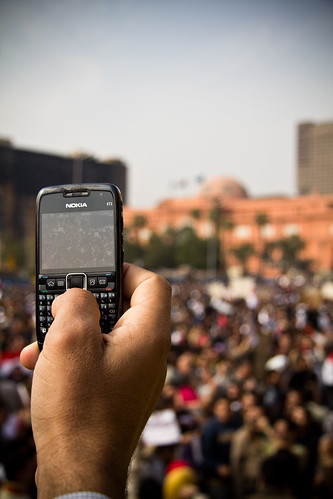New books on Public Diplomacy, December 2011 through April 2012
Take Five readers: Let us know if you like this resource, and we’ll make it a quarterly feature.
1) At the 2012 London Book Fair. Professor Zhao Qizheng is launching his two new books in English. They are Cross-Border Dialogue: the Wisdom of Public Diplomacy, published by the New World Press, and How China Communicates: Public Diplomacy in a Global Age, published by the Foreign Language Press (together constituting an English version of his Chinese book entitled Public Diplomacy and Cross-Cultural Communication, published by Remin University Press, 2011). Zhao says, “I’m trying to present a picture of the real situation in China, to reduce misunderstanding and eliminate the foreign reader’s sense of unfamiliarity with the country.”
2) The People’s Peace Process in Northern Ireland, by Colin Irwin (April 2, 2012) — From the book jacket: ‘I recommend this book to all those involved with peace making and peace building, political negotiations and public opinion polls, as well as those with a particular interest in Northern Ireland. … I am persuaded that the unique approach [Irwin] developed of running public opinion polls in co-operation with party negotiators contributed significantly to the successful outcome of our efforts. – Senator George J. Mitchell.
3) Cyberspaces and Global Affairs by Sean S. Costigan and Jake Perry (Jan 1, 2012). Note Part II: Web 2.0 and public diplomacy includes the following articles: – Call for power? Mobile phones as facilitators of political activism; – ICT infrastructure in two Asian giants: a comparative analysis of China and India; – Information (without) revolution? Ethnography and the study of new media-enabled change in the Middle East; – The political history of the internet: a theoretical approach to the implications for US power; – US identity, security, and governance of the internet; – Information and communications technologies and power; – Social media and Iran’s post-election crisis; – Viewpoint: combating censorship should be a foreign policy goal; – Viewpoint: an alternative prospect on cyber anarchy for policy-makers. About the editors: Sean S. Costigan directs MIT CogNet and teaches information technology at The New School, and Jake Perry is an independent scholar.
3) National Relations: Public Diplomacy, National Identity and the Swedish Institute 1945-1970 by Nikolas Glover (Jan 1, 2012). Says the author: “My study focuses on the Swedish Institute for Cultural Exchange with Foreign Countries, 1945–1970. … It postulates that identifying with and promoting a particular national identity in the post-war world has been a question of relating the nation to others … The concept of national relations leads me to engage with historical research on public diplomacy, the history of communication and the history of nationalism.”
4) Diaspora Diplomacy: Philippine Migration and its Soft Power Influences by Joaquin Jay Gonzalez III (Dec 27, 2011). The author talks about “the remarkable and untapped soft power that international migrants possess and how various actors—from governments, NGOs, business, the church, and international organizations—could tap this valuable resource to enhance global cooperation, development, and understanding. With detailed and intimate illustrations from the experiences of the Philippine diaspora in San Francisco, London, Dubai, Dhaka, and Singapore…”
New paperback editions:
5) The New Arab Media: Technology, Image and Perception by Mahjoob Zweiri and Emma C. Murphy (Mar 29, 2012; hardcover published January 2011). ISBS says “topics examined include: the impact of Al-Jazeera * implementation of the internet in the region * the use of the media for diplomacy and propaganda * image culture * the use of the internet by religious diasporas * information and communication technologies and the Arab Public Sphere * the influence of satellite television on Arab public opinion * the explosion of local radio stations in Jordan.” .
6) Kosovo’s Diplomacy: How can Public Diplomacy have an impact on Kosovo’s political and diplomatic position? by Alban Dermaku (Jan 23, 2012; hardcover published January 2011.) Book flap text: “The declaration of independence marked a new era for Kosovo and its relations with the countries that have recognized its independence. Since then Kosovo is striving in its diplomatic efforts to achieve broader international recognition and become a member of the United Nations. … In modern times, public diplomacy is receiving broad recognition as a crucial element for understanding and influencing foreign publics.”
Postgraduate Theses from the U.S. Naval Postgraduate School in Monterey, CA, new on Kindle eBook:
7) Prioritizing Efforts to Improve Foreign Public Opinion of America: Applying a Business Model to Discover and Create Customer Value by Anthony J. Sampson – Kindle eBook (published Apr 12, 2012; thesis written in 2007 for the U.S. Naval Postgraduate School in Monterey, CA). Author’s note: “Given the reality of fiscal and resource constraints, America could not possibly address all of the concerns of the foreign public; rather, America must focus its efforts on the factors that are likely to make the greatest impact. This study identifies negative factors that interfere with favorable foreign pubic opinion and suggests an analytic framework for prioritizing those factors.
8) The Holy See and the Middle East: The Public Diplomacy of Pope John Paul II by Ronald Patrick Stake – Kindle eBook (published March 31,2012; thesis written in 2006 for the U.S. Naval Postgraduate School in Monterey, CA). Author’s note: “This thesis considers changes in the diplomacy of the Holy See with respect to the Middle East … between 1990 and 2003. Policies … involved (1) establishing full diplomatic relations between the Holy See and the State of Israel; (2) convening the Special Assembly of the Synod of Bishops for Lebanon, ending in the papal visit to Lebanon in May 1997; and (3) opposing the 1991 and 2003 U.S. led wars against Iraq. …{T}he thesis argues that new circumstances occasioned a rethinking of the Holy See’s interests in light of the development of modern Catholic social teaching.”





